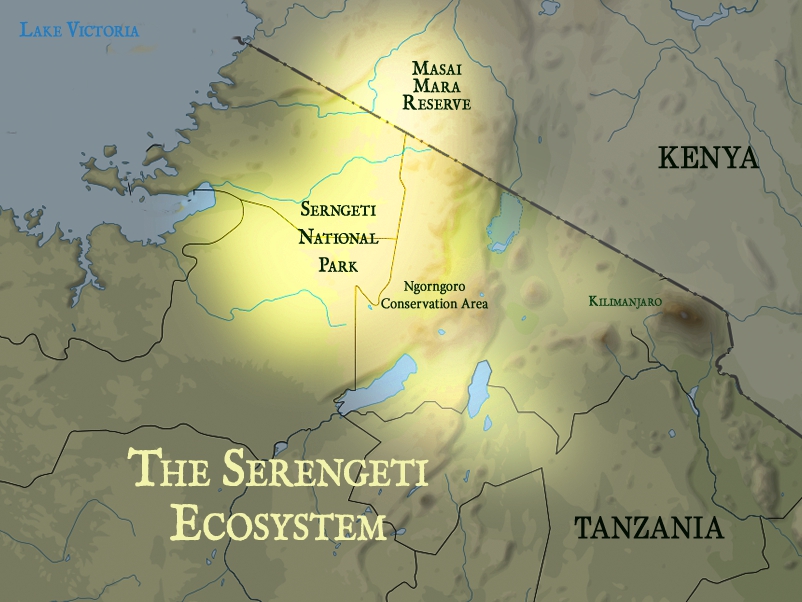The Serengeti National Park is a UNESCO World Heritage Site. Click here to learn why it’s considered a priceless world treasure.

The Future of the Serengeti
It is far from certain that the Serengeti will survive as we know it through this century. A host of threats face the ecosystem: A relentlessly increasing human population makes it hard for people to rise out of poverty. Without direct benefits from conservation, and without understanding how conservation contributes to development, people see the problem as “animals vs. people.” They believe their children, livestock, and farms should take priority. Poaching for bush meat, deforesting for fuel, grazing cattle in the park, these are simply ways to survive. Yet they have dire consequences for the Serengeti.
Communities around the Serengeti already stretch the land’s capacity. If population continues to grow at the current pace, doubling by mid-century and quadrupling by the end of the century, the pressure will be too great. Good governance is crucial for conservation, but in the face of suffering, extreme politics emerge.
Of all the factors in this equation, unchecked population pressures will be the tsunami that wipes away all gains in both conservation and human welfare.
Preservation Involves Both Natural and Human Ecologies
The Serengeti ecosystem really extends beyond the boundaries of the park and adjacent protected areas, into surrounding farms, villages, and towns. Ultimately, people and wildlife share this extended ecosystem and their fates are intertwined.
Preserving the Serengeti is a function two interrelated factors – one we call Natural Ecology, the habitat and wildlife of the Serengeti itself. The other, Human Ecology.
Natural Ecology needs scientific research and monitoring, invasive species eradication, anti-poaching patrols, effective law enforcement, veterinary services, new technologies like drones and remote sensing – all essential to understanding and protecting a complex natural ecosystem.
Human Ecology involves the complex human ecosystem stretching from farms and village around the Serengeti, ultimately to far off cities and government offices where economic and political decisions are made. In the end, these socio-economic factors within East Africa will decide the Serengeti’s fate. Without addressing these social, economic, educational and political dimensions, all other efforts will be for naught.

